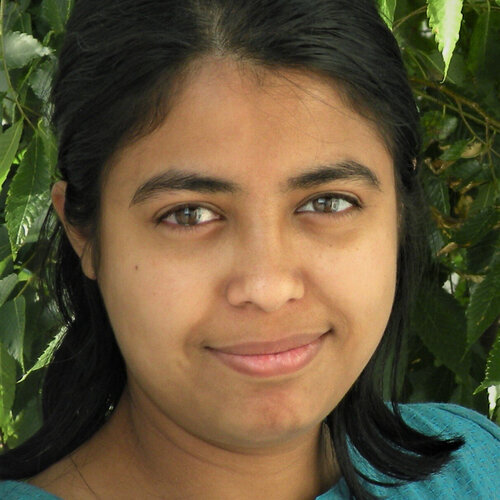Devapriya Chattopadhyay
Devapriya Chattopadhyay
Devapriya Chattopadhyay
Paleoecologist
Devapriya Chattopadhyay is a paleoecologist. She studies the evolution of mollusks (invertebrates with shells, like snails, clams, and scallops) and the environments in which they live.
Devapriya is originally from Balurghat, India, a city near the border of India and Bangladesh. Her interest in paleontology was kindled through reading—particularly books like The Panda’s Thumb by Stephen Jay Gould—and her love of nature. She did not see her first fossil until she was 18 years old. In deciding to go into paleontology, she had to find her own way, as she lacked female role models.
Devapriya received her bachelor of science in Geology from Jadavpur University in Kolkata, India, and she went on to receive her master’s degree in Applied Geology from the Indian Institute of Technology Bombay in Mumbai. For her Ph.D., she went to the University of Michigan. After taking a short temporary faculty position following her Ph.D., she returned to India and began working as an Assistant Professor in the Department of Earth Sciences, Indian Institute of Science Education and Research (IISER) in Kolkata. She is currently an Associate Professor in Earth and Climate Science at IISER.
From the beginning of her paleontological studies, Devapriya’s primary interest has been mollusk evolution. She studies predation on mollusks in the fossil record. She also uses isotopes in fossil mollusk shells to help reconstruct the marine (saltwater) paleoenvironment of the Kutch Basin in western India during the Oligocene (about 34 to 23 million years ago) to Miocene (about 23 to 5 million years ago) epochs. Finally, she studies the distributions of modern mollusks in the waters surrounding the Indian subcontinent.
When Devapriya first returned to India, there were no museums, fossil collections, or databases to draw from for her research. Thus, she has had to work to gather specimens and field data from scratch. She is focused on questions that can be fully addressed using fossils from targeted locations, with the goal of creating data that can be used by future scientists to address broader issues.
Daring to Dig Interview
In this video, Devapriya discusses how she became interested in paleontology, her experiences as a student and later starting a research program, and how she views the representation of women now as compared to when she was a student.
Selected works by Devapriya Chattopadhyay
Chattopadhyay, D. 2017. Predation to climate change: what does a fossil shell tell us? Current Science 112: 1489–1493. Link
Chattopadhyay, D., M. Zuschin, and A. Tomasovych. 2014. Effects of a high-risk environment on edge-drilling behavior: Inference from Recent bivalves from the Red Sea. Paleobiology 40: 34–49. Link
Chattopadhyay, D., M. Zuschin, and A. Tomasovych. 2015. How effective are ecological traits against drilling predation? Insights from Recent bivalve assemblages of the northern Red Sea. Palaeogeography, Palaeoclimatology, Palaeoecology 440: 659–670. Link
Chattopadhyay, D., M. Zuschin, S. Dominici, and J.A. Sawyer. 2016. Patterns of drilling predation in relation to stratigraphy, locality and sieve size: Insights from the Eocene molluscan fauna of the Paris Basin. Palaeogeography, Palaeoclimatology, Palaeoecology 459: 86–98. Link
Chattopadhyay, D., D. Sarkar, and M. Bhattacharjee. 2021. The distribution pattern of marine bivalve death assemblage from the western margin of Bay of Bengal and its oceanographic determinants. Frontiers in Marine Science 8: 675344. Link
Further reading
Aravind, I. 2019. Nine women scientists who are doing phenomenal work. The Economic Times, 1 December 2019. Link
Ghosh, S. (ed.). 2019. Spoorthi: Celebrating Indian women in science. IndiaBioscience. Link
Gupta, R. 2020. Meet Devapriya Chattopadhyay: Indian woman palaeontologist exploring the Earth science. Shethepeople, 25 August 2020. Link
Jairaj, N. 2017. Devapriya and the new era of Indian palaeontology. Thelifeofscience.com, Interview, 1 November 2017. Link
Nath, S. 2020. “Women can’t do science”: 8 trailblazing scientists busting the myth. The better India, 3 January 2020. Link
Video & audio content
IISER Pune Science Activity Centre: Knowing the long-lost life with fossils. Presentation by Devapriya Chattopadhyay for Next-Gen Science Camp, via YouTube. Link


